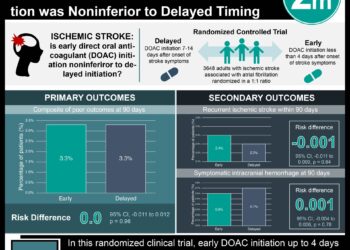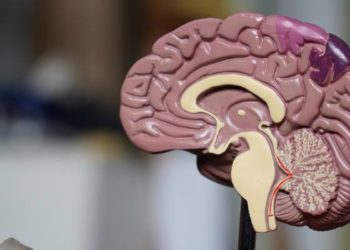Intra-arterial thrombectomy is associated with improved functional outcomes in stroke patients
1. Stroke patients who received endovascular treatment plus standard medical treatment in the public care system in Brazil showed significantly less severe disability at 90 days versus those who received standard care alone.
2. Asymptomatic cranial hemorrhage was judged to have occurred nearly twice as frequently in the thrombectomy group, but the incidence of symptomatic cranial hemorrhage was similar between groups.
Evidence Rating Level: 1 (Excellent)
Study Rundown: While thrombectomy has been shown to be highly effective in treating large-vessel occlusions, this procedure has yet to gain traction in lower-income countries with limited healthcare resources because of its high cost. This study conducted in Brazil aimed to assess the utility and feasibility of incorporating endovascular treatment into the country’s public health care system. Patients who received thrombectomy were found to have a significantly better distribution of scores on the modified Rankin Scale of Neurologic Deficit compared to those who received standard thrombolytic care, a finding that resulted in the early termination of the trial. Immediate substantial reperfusion was observed in over three quarters of patients who received thrombectomy; the thrombectomy group also had superior target-vessel recanalization at 24 hours. No between-group differences were observed in the overall incidence or category breakdown of symptomatic intracranial hemorrhage. These improvements came at an average cost of roughly $8000 USD per patient. A major obstacle associated with this study was a dearth of imaging resources that led to delays in treatment as well as a potential overestimation of adverse events. While overall mortality was higher than in previous trials in higher-income countries, the relative benefits shown in this study support the adoption of endovascular stroke treatment in developing regions.
Click here to read the study, published today in NEJM
Relevant Reading: Thrombectomy within 8 Hours after Symptom Onset in Ischemic Stroke
In-Depth [randomized controlled trial]: This multicenter open-label trial involved patients with occlusion of the intracranial internal carotid artery or the first segment of the middle cerebral artery that could be treated within 8 hours after symptom onset. Patients were classified by age, baseline NIHSS score, use of alteplase, occlusion site, and participating center and assigned in a 1:1 ratio to receive either thrombectomy plus standard care or standard care alone according to Brazilian Stroke Society and American Heart Association guidelines. Conducted after 174 patients had reached 90 days of follow up, an interim analysis for overwhelming efficacy showed an adjusted common odds ratio for a better distribution of Rankin scores of 2.24 (95% confidence interval [CI], 1.30 to 3.88; P=0.004). Inclusion of data from all 211 patients who had been enrolled by this point shifted the odds ratio slightly further in favor of thrombectomy (odds ratio [OR], 2.28; 95% CI, 1.41 to 3.69; P=0.001). Reperfusion of over 50% of the affected territory was achieved immediately following thrombectomy in 91 of 111 patients (82%), but asymptomatic intracranial hemorrhage occurred twice as frequently in this group (51.4% vs 24.5%; OR, 3.24; 95% CI, 1.77 to 6.01). However, symptomatic intracranial hemorrhage occurred in 4.5% of patients in both groups, and 90-day mortality appeared to be independent of treatment regimen as well.
Image: PD
©2020 2 Minute Medicine, Inc. All rights reserved. No works may be reproduced without expressed written consent from 2 Minute Medicine, Inc. Inquire about licensing here. No article should be construed as medical advice and is not intended as such by the authors or by 2 Minute Medicine, Inc.







